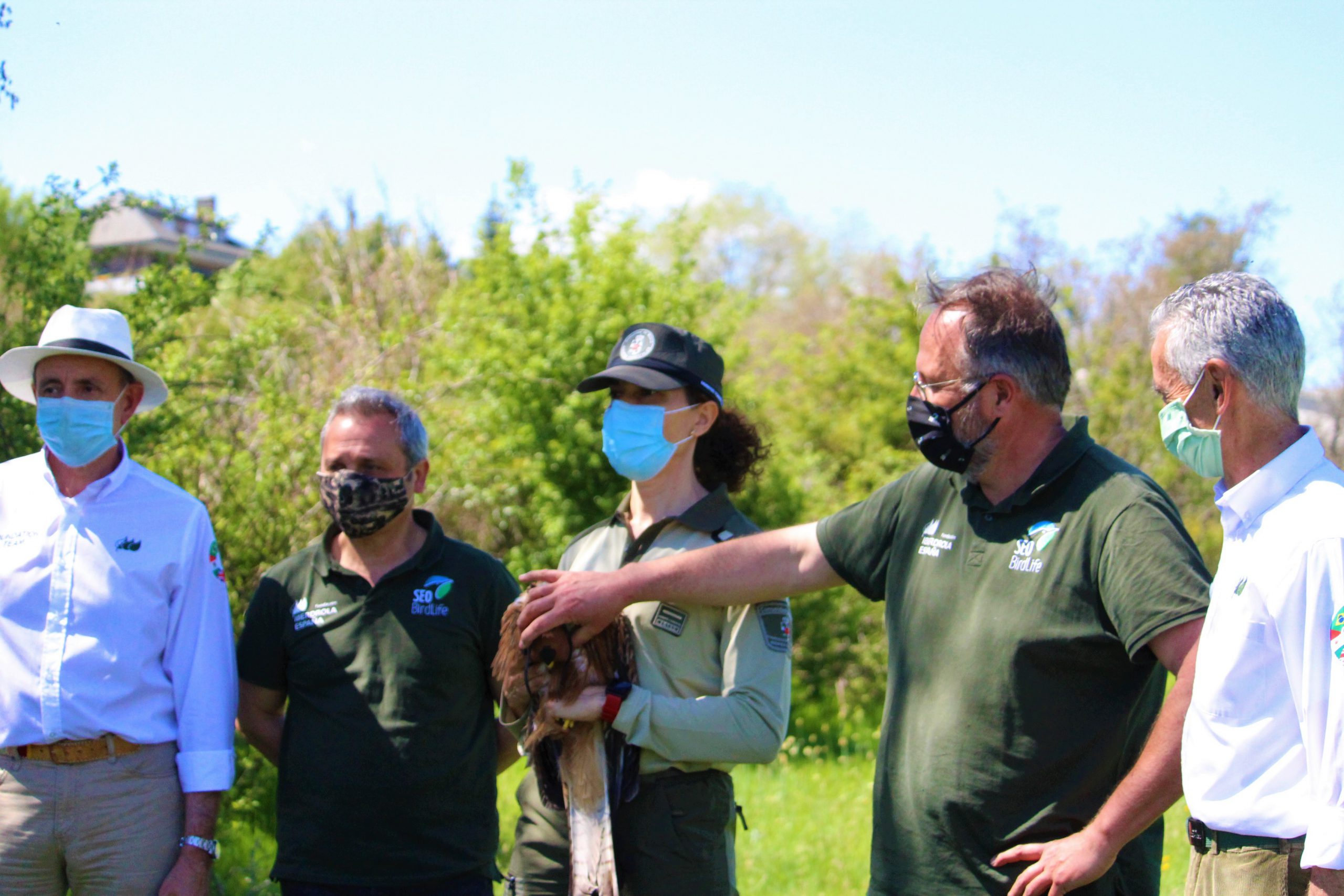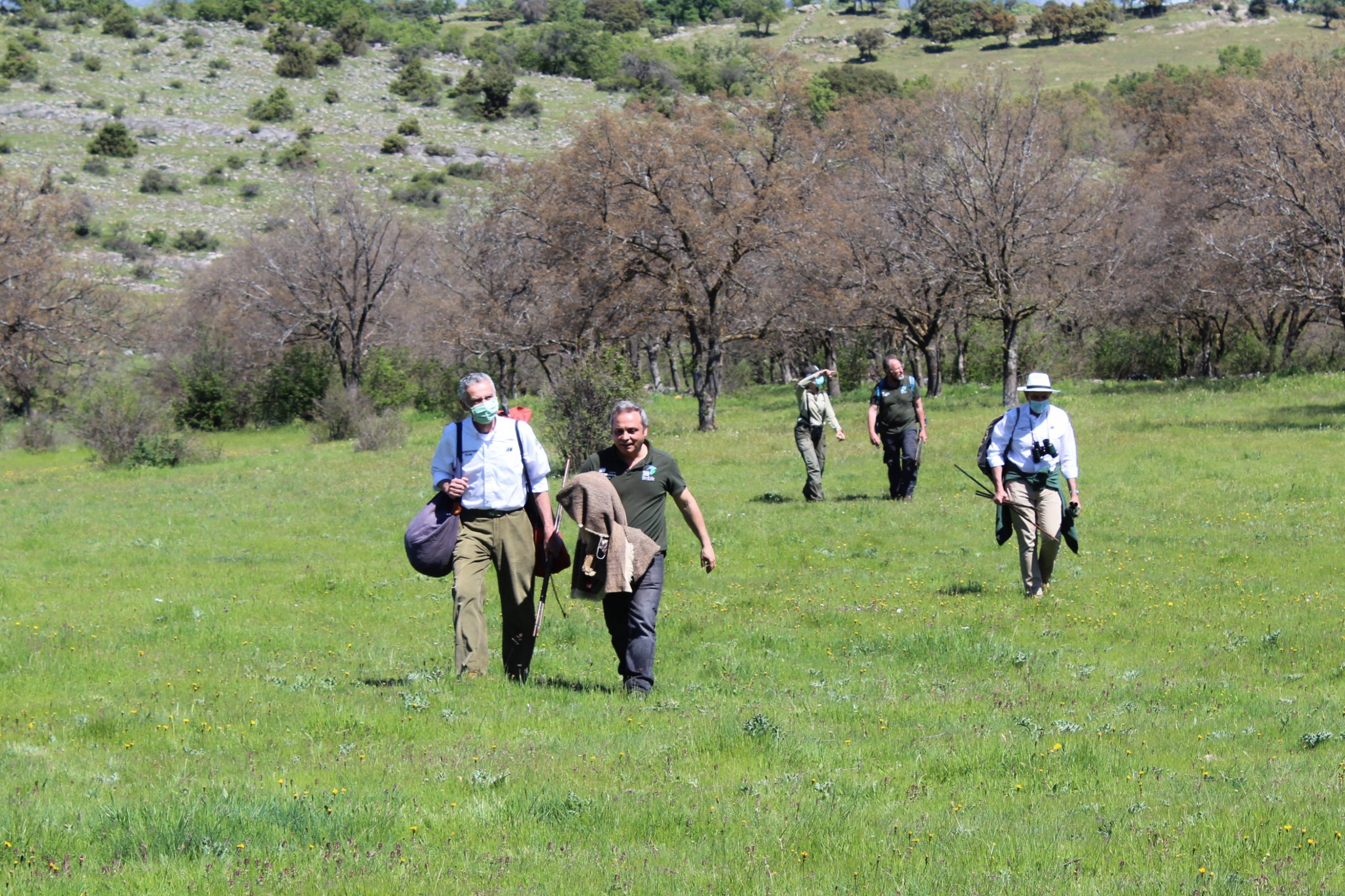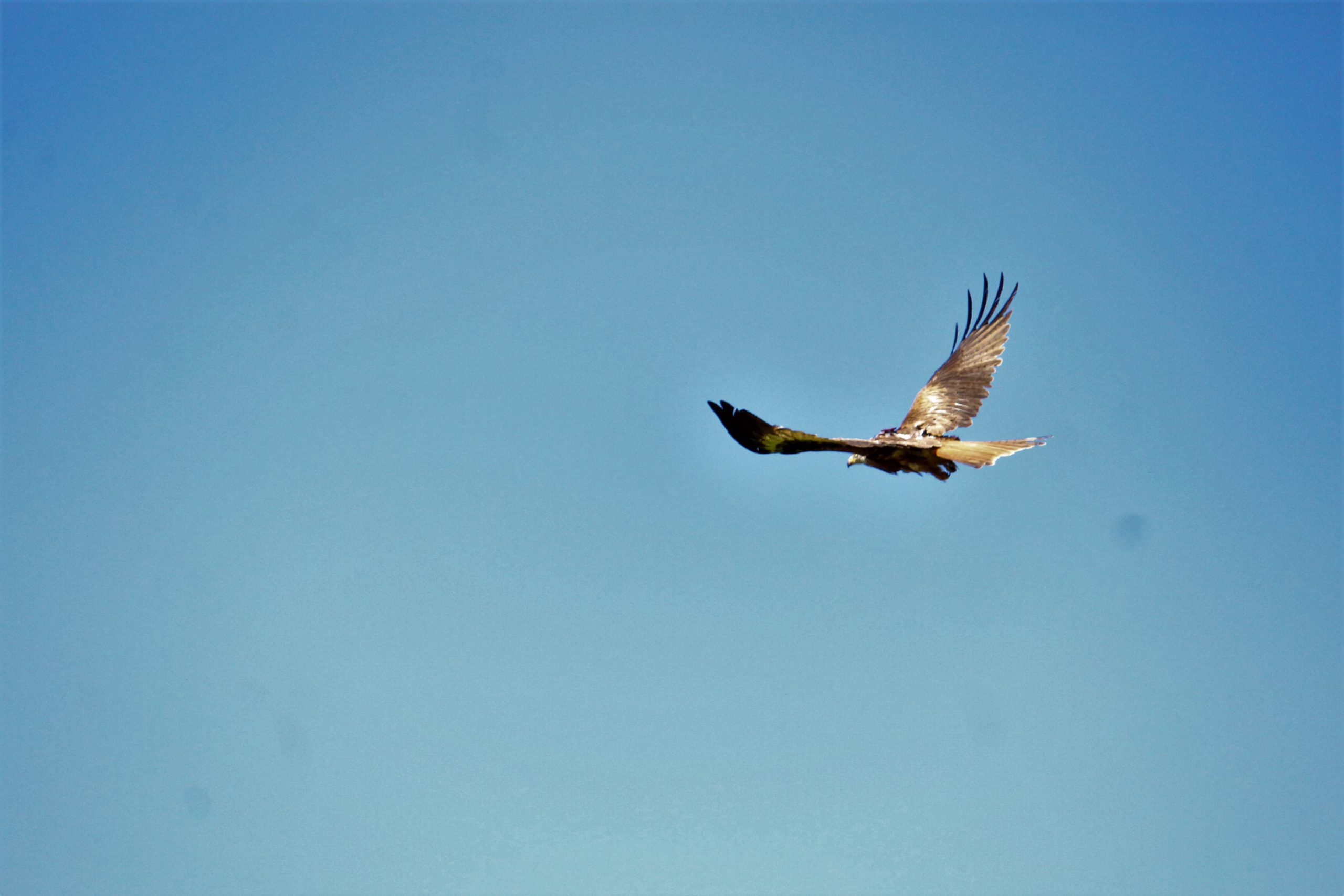- SEO/BirdLife and Fundación Iberdrola España have been collaborating in the Migra Program since 2011 to learn about bird migrations and study the circumstances that may affect their routes. In total, the Migra Program has 1,201 marked birds of 33 different species.
- This year, the target species of the Migra Program is the black kite, a long-distance migratory raptor that winters in the Sahel.
- During this year, 18 new birds will be tagged.
Madrid 7/05/2021. This year the protagonist species of World Migratory Bird Day, celebrated on May 8, is for SEO/BirdLife the black kite. A trans-Saharan migratory bird of prey, whose populations spend the winter in the African Sahel, and of which there is still much to know about its migration and wintering areas.
For the past ten years, SEO/BirdLife and Fundación Iberdrola España have been collaborating in the Migra Program to study the migration and spatial ecology of birds through marking with remote tracking devices. A total of 1,201 marked birds of 33 different species, with a database of millions of locations, thanks to hundreds of collaborators and Spanish and foreign entities. This creates a very complete information base to study changes in bird behavior based on processes as general and large-scale as climate change or loss of biodiversity, as well as small-scale, which causes mortalities in certain areas due to excessive use of insecticides, illegal hunting, loss of habitats or poorly designed infrastructures.
Migra program target species
In 2021, the black kite is the target species of the Migra Program. Spanish black kite populations are known to winter in the African Sahel thanks to GPS-tagged birds in Doñana by the EBD. These devices allow us to know in detail the movements and migration of this bird of prey, its breeding areas in Spain, the wintering areas in Africa, and the places where it stops to rest during its migratory journeys. In the coming months, 18 birds will be marked with GPS transmitters to learn about their migratory routes.
Fernando García, president of Fundación Iberdrola España, emphasizes “Fundación Iberdrola’s commitment to environmental protection is becoming stronger every day. Support for the Migra Program is another example of the importance that the company attaches to improving biodiversity and, in particular, to the protection of different species of birds. In this area, the collaboration with SEO/BirdLife allows us to go further with initiatives such as this one or the recent agreement to develop actions to reduce the causes that are affecting steppe bird populations.”
“We are in a time of global crisis, birds allow us to know the state of health of our planet. Knowing their migratory routes and their wintering areas gives us valuable information about what is happening. The climate emergency and the loss of biodiversity is a reality that we must face with data, with rigor, and that is precisely what the monitoring of birds that we do thanks to the Migra Program provides,” says Asunción Ruiz, executive director of SEO/BirdLife and adds: “From scientific knowledge we must propose conservation measures and cooperation policies between countries to ensure a good state of health of nature as the best tool to combat any crisis”.
Black Kite
The black kite is one of the most widely distributed birds of prey in the world. It is distributed throughout most of the temperate and tropical areas of the Old World and Australasia. In the Palearctic it is a summer species and breeds from the Mediterranean to the temperate zones of the Nordic countries. In Spain it breeds mainly in the north and west and is closely associated with garbage dumps, dunghills, villages and farms. The Spanish population was estimated at 11,000-13,000 pairs according to the 2005 census.
It is a trans-Saharan migrant that makes long journeys between the Iberian Peninsula and the Sahel. Wintering areas are in semi-arid grasslands, savannahs and steppes in Mali, Mauritania and Senegal, as shown by birds marked with emitters in the Doñana population. However, the wintering areas of the Spanish population are not yet known in detail.
This is a species highly affected by human-induced global change. Landfills are strongly influencing their behavior and, in addition, it seems that more and more birds of unknown origin are wintering in Spain. On the other hand, the rapid change that is occurring throughout the Sahel area, with major habitat alterations and a large increase in the human population, may also be affecting many migratory species, such as the black kite, which winter in these savannah areas.
World Migratory Bird Day
On Saturday, May 8, people around the world will celebrate World Migratory Bird Day (WMBD), a global campaign dedicated to raising awareness about migratory birds and the need for international cooperation to conserve them. It also coincides with the celebration of the Global Big Day where thousands of bird enthusiasts will record their bird observations worldwide on eBird. And with the XXI Ornithological Marathon SEO / BirdLife held since 2000 and takes place on May 8 and 9 in its twenty-first edition.
The conservation of migratory birds is more complicated, as they know no borders and throughout the year they pass through many different countries and continents. To ensure their conservation in the future, it is necessary to know in detail where they breed, where they spend the winter, what routes they use in their migration and where they stop to rest during their journeys.
Migra Program
The Migra Program, launched in 2011 by SEO/BirdLife with the collaboration of Fundación Iberdrola España, incorporates the latest technologies in geolocation and remote monitoring systems to know in greater detail the movements of birds inside and outside our country. Thanks to this initiative, it is possible to know the start and end dates of their migrations, the stopping places and feeding points, the time it takes them to make these trips, whether they are repeated in spring and autumn migration, the main wintering and dispersal areas, or whether the routes are the same year after year. Fundación Iberdrola España collaborates with this program as part of its activity in support of biodiversity, one of its main areas of action.
The Migra Program currently has 1,201 marked birds of 33 different species, of which 724 birds of 32 species have provided useful information. This program has more than 350 collaborators and 60 partner organizations in Spain and abroad.
Iberdrola, committed to protecting the environment
Iberdrola, through its Foundation in Spain, is firmly committed to protecting the environment and improving biodiversity. Thus, the commitment to biodiversity extends to important actions that are governed by the lines of action set out in the Master Plan, such as the protection of birdlife and the conservation of habitats.
Fundación Iberdrola España works with institutions and companies to improve the ecological environment and protect biodiversity. Among other initiatives, it supports the “Rey Jaime I” Award for Environmental Protection, which is granted to people who have excelled in research on improving the ecological environment. It also collaborates with the Fundación Patrimonio Natural de Castilla y León in a habitat improvement project and with the Consejería de Agricultura, Desarrollo Rural, Medio Ambiente y Energía de la Junta de Extremadura in a project to monitor significant species in the region, such as the black stork and the Egyptian vulture, two endangered species whose migratory behavior is not well known.



